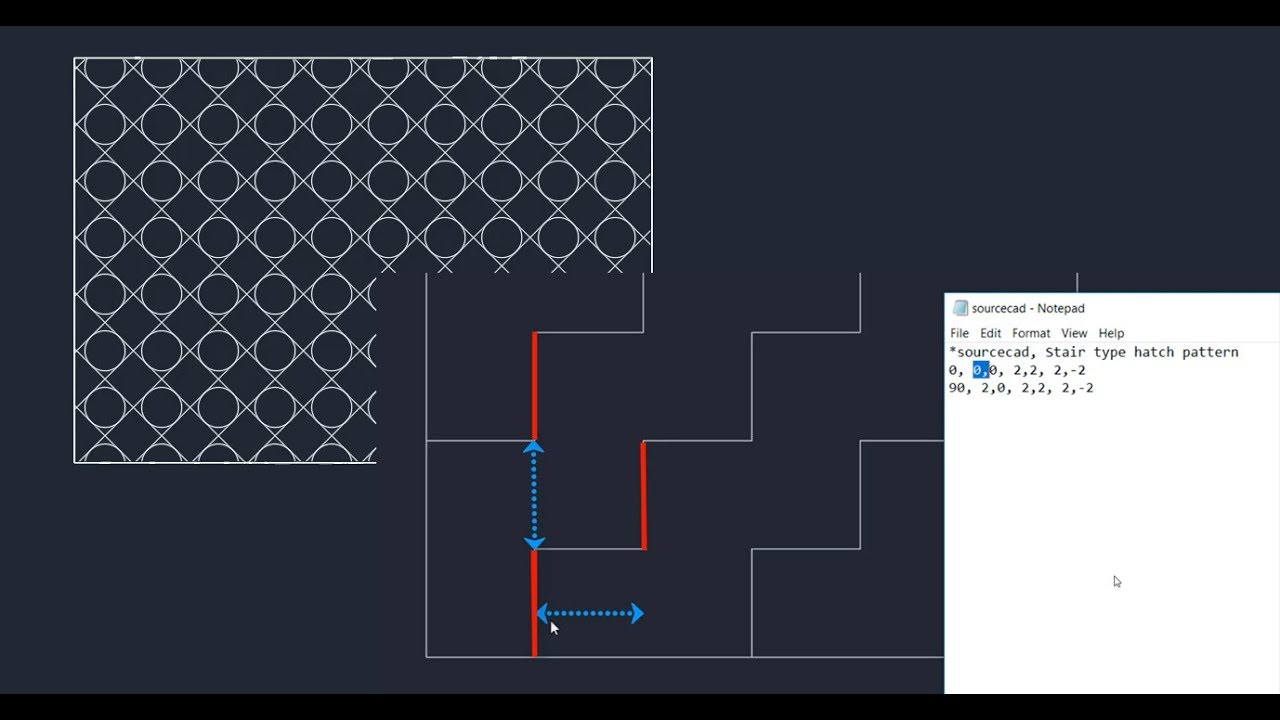

- How to install hatch patterns in autocad 2018 upgrade#
- How to install hatch patterns in autocad 2018 full#
- How to install hatch patterns in autocad 2018 download#
- How to install hatch patterns in autocad 2018 windows#
Here’s the easiest way I have found to create. These numbers basically describe each line in a patterns length, origin, angle etc… and in my opinion is way to time consuming to try and create yourself! (Although you can certainly give it a go if you want).
How to install hatch patterns in autocad 2018 full#
pat file in a text editor you will see they are full of numbers like this: However, if you really really want to make a custom hatch pattern, here is the easiest way I have found:
How to install hatch patterns in autocad 2018 download#
pat files you can download for FREE ( for example) so if you’re after something in particular you can search the net, download then import into Revit. So if you have a hatch pattern that you like in AutoCAD then you can easily import it into Revit via this method. pat file – those of you who are familiar with AutoCAD will know that the hatch patterns in Autocad are. I’m guessing this is probably not the kind of hatch pattern you wanted to create! So click on Custom and click on Import. Here you can create a simple line pattern, basically a bunch of repeating parallel or intersecting lines (pretty boring stuff!). To the right, click New to create a new pattern. This will bring up the Fill Patterns dialog box which shows you all the fill patterns available. To create a new fill pattern, go to the Manage Tab, click on ‘Additional Settings’ and on the drop down click on Fill Patterns. This is especially true if you are coming from AutoCAD and you want your documentation to be consistent.Ĭreating your own custom Revit hatch patterns is actually quite easy if you follow the steps outlined in this blog post. So I never really have a problem or may be benefits of the first method.A question I get asked about a lot (and I’m sure you have probably asked this yourself!) is how do I make my own Revit hatch patterns?! Revit comes with a bunch of great out-of-the-box patterns, but every company has there own particular ‘look’ where custom hatch patterns are needed. I always use the last method and avoid the first one. If you use hatch dialog box, you can change pattern type to custom or user-defined. If you can’t find it, you may need to change pattern type to user-defined. As most of the constructors know, if you want to install tiles on the floor or walls accurately, you must consider the gap between tiles in your drawing. In files tab, below support file search path, add your folder.Ĭlick OK to accept this changes, then when you activate hatch command, you should see it in your pattern list. This application will help you to create a custom tile hatch pattern with the gap between tiles in horizontal and vertical angles. Open AutoCAD options (type OP then enter). If you place all your custom hatch in your custom folder, you can add support file search path. You should immediately see your custom hatch in pattern list.
How to install hatch patterns in autocad 2018 upgrade#
There is a comment that if you add user-defined hatch below that section, then when you upgrade your AutoCAD this file will be migrated correctly. Paste it at the bottom most of your acad.pat file. I use chainlink pattern from DotSoft website. Open another instance of Notepad and open your custom hatch.

I suggest you make a backup of this file before you start to work.

Find acad.pat and open it with text editors like notepad or notepad ++. It should be something like C:\Users\YOURWINDOWSACCOUNT\AppData\Roaming\Autodesk\AutoCAD XXXX – English\RXX.0\enu\Support. Or you may just make your acad.pat corrupt.
How to install hatch patterns in autocad 2018 windows#
You may lose your custom pattern if you somehow need to reinstall AutoCAD or your Windows account corrupts. There are two ways to do this: you can combine your custom pattern with acad.pat or add a support file search path. So you have downloaded or created your own AutoCAD pattern.


 0 kommentar(er)
0 kommentar(er)
